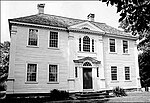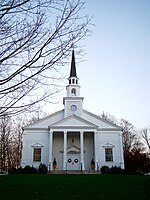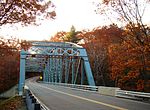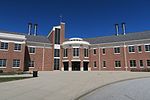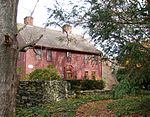March Route of Rochambeau's Army: Old Canterbury Road
American Revolution on the National Register of Historic PlacesBuildings and structures in Windham County, ConnecticutConnecticut in the American RevolutionHistoric places on the Washington–Rochambeau Revolutionary RouteNRHP infobox with nocat ... and 3 more
National Register of Historic Places in Windham County, ConnecticutPlainfield, ConnecticutRoads on the National Register of Historic Places in Connecticut

March Route of Rochambeau's Army: Old Canterbury Road is a historic site in Plainfield, Connecticut along the 1781 and/or 1782 march routes of Rochambeau's army. It includes a stretch of what is now Old Canterbury Road and a stretch of Canterbury Road (Connecticut Route 14A) whose environs evoke the period of the Rochambeau army's march. It is a 2-acre (0.81 ha) site that was listed on the National Register of Historic Places in 2003.
Excerpt from the Wikipedia article March Route of Rochambeau's Army: Old Canterbury Road (License: CC BY-SA 3.0, Authors, Images).March Route of Rochambeau's Army: Old Canterbury Road
Canterbury Road,
Geographical coordinates (GPS) Address External links Nearby Places Show on map
Geographical coordinates (GPS)
| Latitude | Longitude |
|---|---|
| N 41.689444444444 ° | E -71.951111111111 ° |
Address
March Route of Rochambeau's Army: Old Canterbury Road
Canterbury Road
06374
Connecticut, United States
Open on Google Maps
